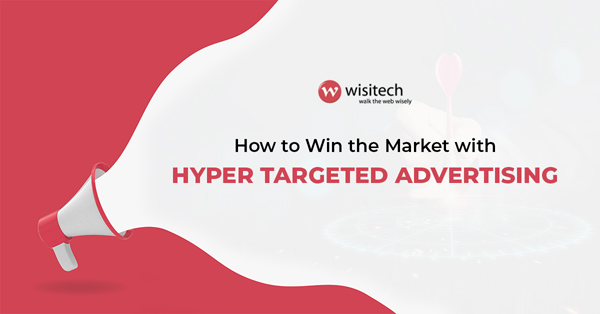How to Win the Market with Hyper Targeted Advertising
Before it took the fall over privacy and security concerns, social media pioneer, Myspace, coined the term ‘Hypertargeting’ way back in 2007. Hypertargeted advertising meant delivering ad content to specific groups of consumers based on their self-declared interests and preferences. Consumers, in 2020, find themselves once again trying to drown out the noise associated with overactive marketers posting random content to attract attention. In order to fend off the clutter, consumers are increasingly giving preference to personalized advertisements, that address their concerns when they need to, and where they need them to be.
Retail
was hugely affected by the COVID-19 pandemic, forcing customers to purchase
online, and spend more hours on the internet. One of the ways businesses
responded was by personalizing shopping catalogues. Personalization involved
the collection of user data as they browsed specific pages on eCommerce sites,
analyzing demographic and geographic data, incomes, professions, and known
behavioral traits. From this information, it was easy to attribute consumer
preferences to specific groups of people. These groups could then be targeted
through specific advertisements upon the performance of specific actions within
a web catalogue page. For example, placing the cursor over a particular type of
shopping item would result in a non-intrusive pop-up showing offers and
discounts associated with the item.
Nextdoor
is a social networking platform that groups users by zip code. Members of the
Nextdoor neighborhood can conveniently exchange hobbies, messages, and
information. People can join smaller or larger groups, trade, share, buy
things, and relay relevant news and details of local events. People can even
find places to live or give out spaces for rent. Local businesses can easily
run inexpensive ads with local relevance on Nextdoor. The platform’s thrust on
civil interactions and communal harmony keep political discussions out of the loop.
Users get verified and recommended. Shops and establishments that provide goods
and services within the neighbourhood can post twice a month free of charge.
People in friction-free environments are seen to take greater interest in
exchanging names of places to eat and shop, buy paint from, do their taxes, and
share a drink. There is no end to the number of neighbourly things that people
will do when left to their own devices.
Nextdoor
is like Facebook restricted to a particular community. Local businesses get
affordable sponsorship opportunities, and reach out to specific audiences
economically with great returns on investment.
Advanced
analytics is a key component of hypertargeted advertising. User analytics
gleaned off of simple user capture dashboards, such as Google Analytics, can
deliver powerful insights into consumer preferences by age, location,
profession and capacity to pay (income). Social media platforms such as
Facebook collect preference information from their users voluntarily. Sometimes
user preferences can be determined based on the posts these users read, follow,
subscribe to or generate. Analysing post data may take much more effort and
dedicated manpower in terms of identifying and reading broadcasts from specific
users. However, targeting the right influencers in this way may lead to great
returns in terms of word-of-mouth and brand self-marketing.
Personalization
is an accepted way of ‘breaking the Spam barrier’. The more timely, relevant,
and customized an email is, the more likely it is not to end up in the Spam or
Trash folder. Cold emails will work better when they have a good amount of
familiarity and personalization focussed on the receiver. Similar strategies
are applicable to personal messaging on platforms such as WhatsApp, SnapChat or
WeChat.
What
hypertargeting also means is employing as many platforms and channels as is
necessary to gain the vital chunk of your customers. In other words, it is
necessary to create an omni-channel experience for digital customers. The more
options users have, the more the touch-points they can create and take
advantage of customer service as well as salespeople to obtain their best buyer
experience.
Marketers
need to realize that customers are placing even greater emphasis on the complete
online experience than before. The June 2020 CMO Survey shows that customers
now prefer lower in-person marketing engagement (97% of those surveyed). That
is, store visits and trade show attendance aren't as important as before.
Increased value is now being placed on digital journeys (83.8%). About 59.5% of
customers are now turning to reviews, blogs and posts about brands on the
internet. And 58.8% customers now conduct online research before making
purchases.
Hypertargeting
requires the modern marketer to know the customer personally like never before.
Fortunately, data analytics, AI, and group psychology are present to help make
sense of customer buying behavior based on categorizable preferences. Putting
more time and effort into understanding patterns of buying behavior can help
marketers gain greater insights and ROI on their marketing budgets going
forward.
Have questions? Talk to an expert today.
Post Your Ad Here


Comments